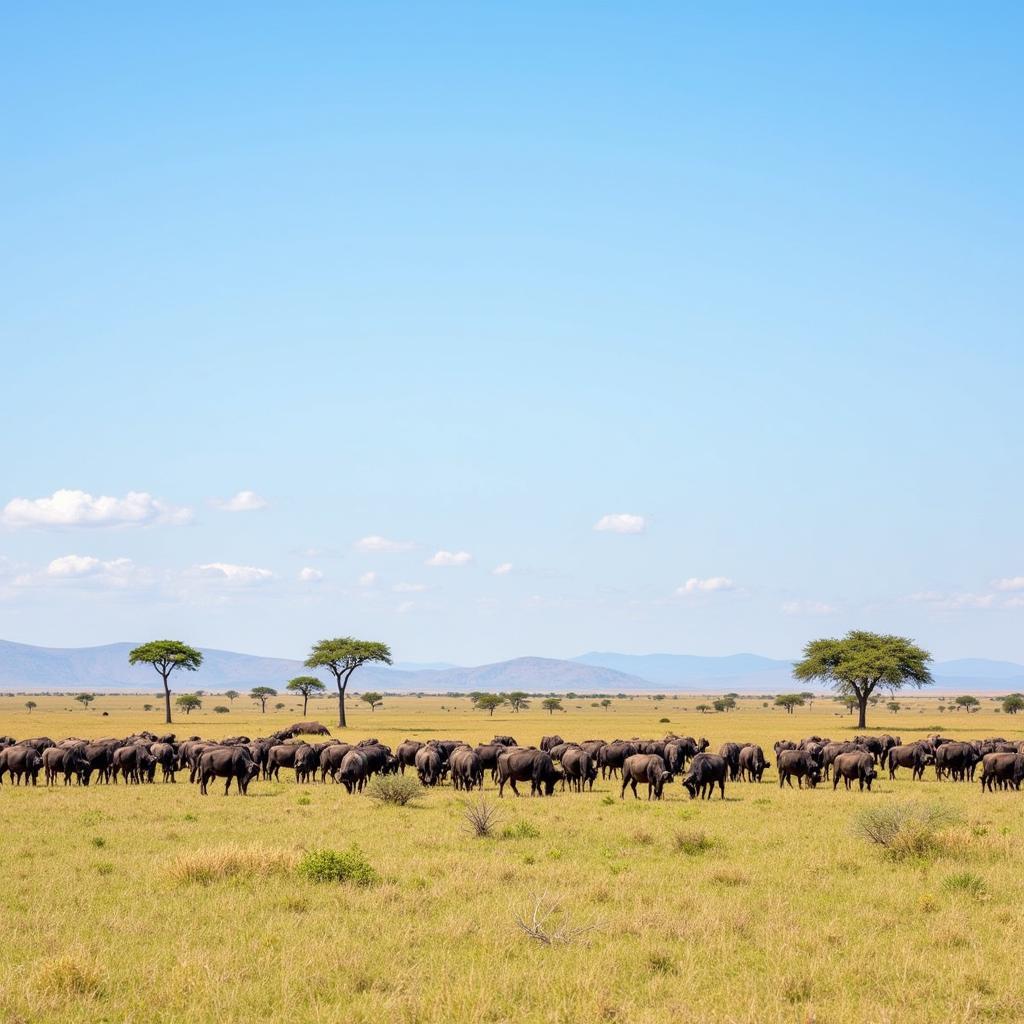The African Buffalo: A Powerful Symbol of the Wild
The African buffalo, scientifically known as Syncerus caffer, is a large, imposing herbivore that roams the savannas, swamps, and forests of sub-Saharan Africa. Often called the “Black Death” or “widowmaker”, this formidable creature has earned a reputation as one of Africa’s most dangerous animals, capable of defending itself with astonishing power and ferocity.
Physical Characteristics: A Closer Look at the African Buffalo
African buffalo are massive creatures, with bulls (males) weighing up to 2,000 pounds and standing over 5 feet tall at the shoulder. They have a distinctive, robust build with a thick neck, short legs, and a broad head adorned with their most striking feature – their horns. The horns of an African buffalo are a testament to their age and power. They curve outwards from the head, forming a massive boss, or shield, across the forehead, and can reach over 3 feet in width.
Cows (females) are smaller than bulls, with lighter horns and a less pronounced boss. The color of their coat varies depending on the subspecies, ranging from dark brown to black, with some individuals displaying reddish-brown hues.
Habitat and Distribution: Where do African Buffalo Roam?
African buffalo are highly adaptable animals and are found in a variety of habitats across sub-Saharan Africa. They prefer areas with access to water and grazing land, such as savannas, grasslands, swamps, and forests. Their range extends from the southern tip of Africa all the way up to the Sahel region, bordering the Sahara Desert.
 African Buffalo Herd in Savanna
African Buffalo Herd in Savanna
However, habitat loss due to human encroachment and agriculture has led to a decline in their numbers in certain regions.
Social Behavior: The Strength of the Herd
African buffalo are highly social animals and live in herds that can range in size from a few dozen individuals to over a thousand. The herd structure is complex, with a dominant bull leading the group and maintaining order. They communicate through a series of grunts, snorts, and bellows, maintaining a cohesive unit that moves and grazes together.
Young calves stay close to their mothers for protection, while older juveniles playfully spar with each other, honing their fighting skills for the future.
The African Buffalo in the Ecosystem: A Keystone Species
As large herbivores, African buffalo play a crucial role in their ecosystems. Their grazing habits help shape the landscape, preventing the overgrowth of certain plant species and creating a mosaic of habitats for other animals. Their dung provides nutrients for the soil, supporting a diverse array of insects and invertebrates.
Furthermore, they are an important prey species for large predators such as lions, leopards, and crocodiles, contributing to the delicate balance of the food chain.
Threats and Conservation: Protecting the Mighty Buffalo
Despite their formidable reputation, African buffalo are facing a number of threats. Habitat loss due to human population growth and agriculture is a major concern, as is the risk of disease transmission from domestic livestock. Poaching for their meat and horns also poses a significant threat in some areas.
Conservation efforts are underway to protect these magnificent creatures, including habitat restoration, anti-poaching patrols, and community-based conservation programs.
Conclusion: The Enduring Legacy of the African Buffalo
The African buffalo is a powerful symbol of the wild, embodying the raw beauty and untamed spirit of the African continent. They are a reminder of the interconnectedness of all living things and the importance of preserving the delicate balance of nature. By understanding and respecting these remarkable animals, we can contribute to their long-term survival and ensure that future generations can continue to marvel at the sight of a thundering buffalo herd.

